Peloton Bike review
Two-minute review
If you’re interested in fitness, it’s likely you’ve heard of Peloton. It’s a relatively recent addition to the home fitness market that aims to give you a boutique spin class-like experience in your own home.
Cycling and spinning enthusiasts are the main target demographic for Peloton, but the company is also aiming its fitness service at newbies who want to get fit and enjoy a full workout experience without having to sweat it out in a room full of people.
The Peloton service provides you with the bike itself and all the equipment you need to get started including a large 21.5-inch HD display just in front of the handlebars. Rather than this being used to binge boxsets it’ll be your window to instructors on the Peloton service.
You’ll get those instructors onto your display by subscribing to an All Access membership that costs $39 / £39 / AU$59 a month. The subscription gives you access to thousands of classes providing workouts with different genres of music, different levels of expertise and different presenting styles from the instructors.
This service is fantastically well put together and each instructor offers a unique take on spin classes. That’s not all. The company has started providing extra workouts such as yoga, strength training and even boxing.
Onto the equipment. The Peloton Bike is a premium piece of equipment that offers an optimum workout experience without taking up a huge place in your living space – though it is large.
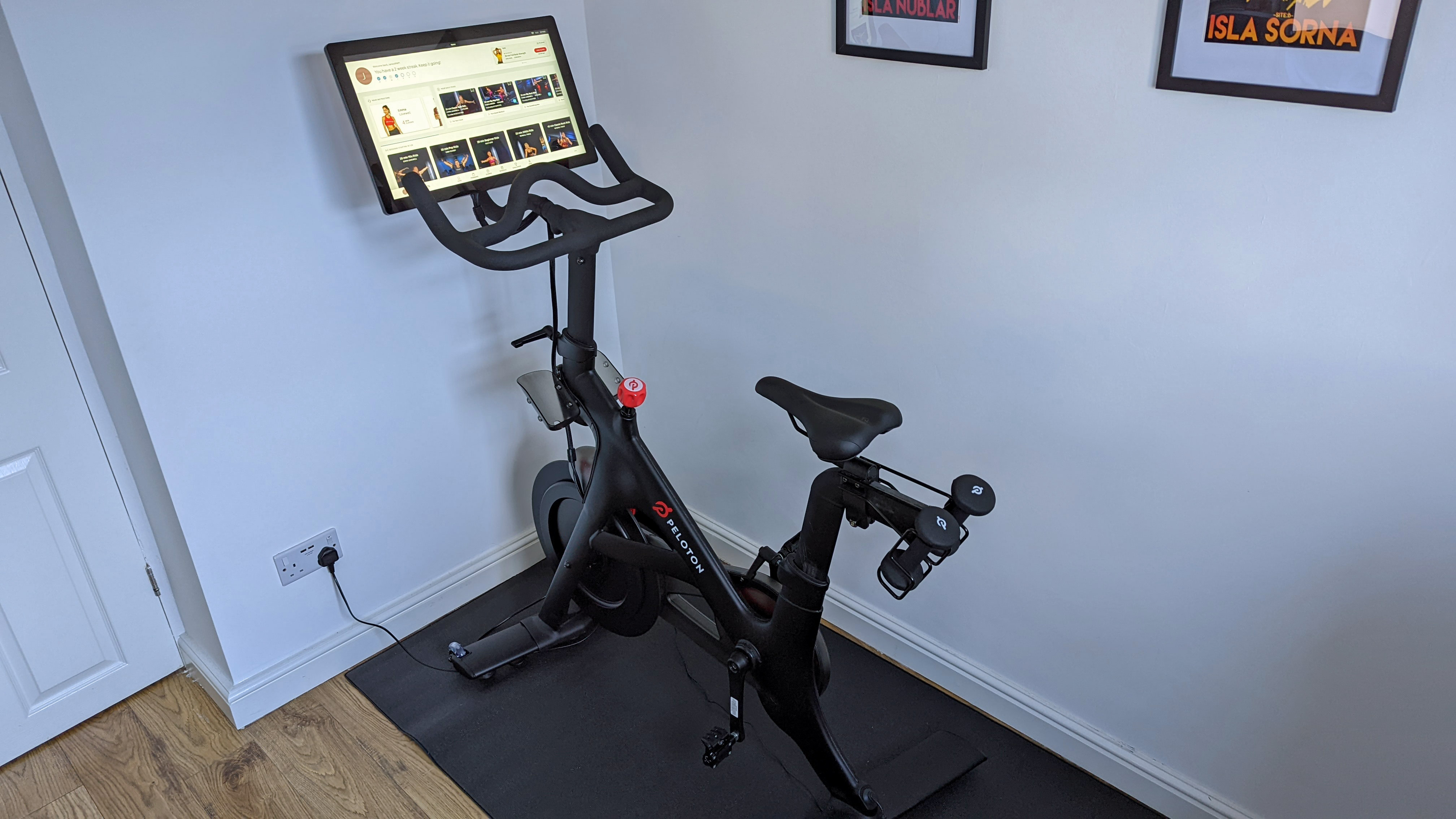
The bike is easy to alter to your liking. It’s comfortable to ride for long periods of time and during our three-month testing period we found it durable with no quality issues of the equipment as a whole.
The Peloton Bike experience is fantastic if you’re looking to get fit from the comfort of your own home or if you’ve tried the odd spin class before and want to dive deeper into the activity. It’s also built for those who are adept at spin classes already.
The big problem is the price of the Peloton service overall. The cheapest bike option comes in at $1,495 / £1,350 / AU$ 2,295. That is then paired with a monthly subscription of $39 / £39 / AU$59, which makes the experience particularly costly.
If you’re going to be on your Peloton several times a week it’ll be worth the investment. However, this isn’t a service you should consider if you’re not committed to embracing spinning on a regular basis.
Peloton Bike price and availability
The Peloton Bike has been available since 2014, and you can buy it now either online or through one of the brand’s brick-and-mortar stores. It’s an incredibly expensive piece of equipment, and we’ll break down the costs below.
Before we talk through the equipment itself, it’s important to note there is a monthly fee for access to Peloton’s workout service. That costs $39 / £39 / AU$59 a month.
Don’t ignore this when considering the price. It’s a must-have element of the Peloton experience, as you won’t be able to use the bike to anywhere near its full potential without subscribing.
The standard Peloton Bike (which we reviewed) starts at $1,495 / £1,350 / AU$ 2,295 for the most basic package. For that you get the bike, a 12-month limited warranty and delivery of the product.

If you want accessories, you can buy them separately or purchase bike packages that include them. For example, the Bike Essentials package adds a pair of cycling shoes, two bike weights and a pair of headphones to the basic bike package for $1,645 / £1,495 / AU$2,525.
For those who need more, the Bike Works package also includes a Heart Rate Monitor and a Bike Mat for $1,745 / £1,595 / AU$2,595. The Bike Family is built for two people sharing and comes with two pairs of shoes, two pairs of headphones, two heart rate monitors and two Peloton water bottles for $1,945 / £1,795 / AU$2,845.
That’s a lot of money, so Peloton does offer payment schemes. For example, you can pay $39 / £35 / AU$59 a month for the standard Peloton Bike package over a period of 39 months. That’s just over three years.
An additional complication to your Peloton decision is whether you need the Peloton Bike Plus. This product launched in 2020 and it’s designed to be an even more premium experience. We’ll dig into exactly what the differences are in the section below, but the price begins at $2,495 / £2,295 / AU$3,695 for the basic package rising to $2,945 / £2,745 / AU$4,395 for the Bike Plus Family package.
Peloton knows how expensive its product is as it dropped the price of its equipment in mid-2021: the bike had originally cost $1,895 for the standard package. That’s a $400 price drop, and we saw similar discounts around the rest of the world as well.
Design and setup
The bike itself is a high-end piece of equipment. In fact, it’s not dissimilar to what you’d expect to see in a dedicated spin class.
It’ll be set up for you when it’s delivered to your home, and the delivery specialists will be able to talk you through how you can ensure it’s set up just right. If multiple people in your household are using it, it’s easy to change the positioning of the seat, handlebars and screen.
Our tester is a 6ft 2 adult, and it was a comfortable experience… or as comfortable as you can imagine for a spinning bike.
So far, so similar to a regular spinning bike, but then there’s the 21.5-inch HD display on the front where you’ll select your workouts and watch trainers, see your stats or take scenic rides.
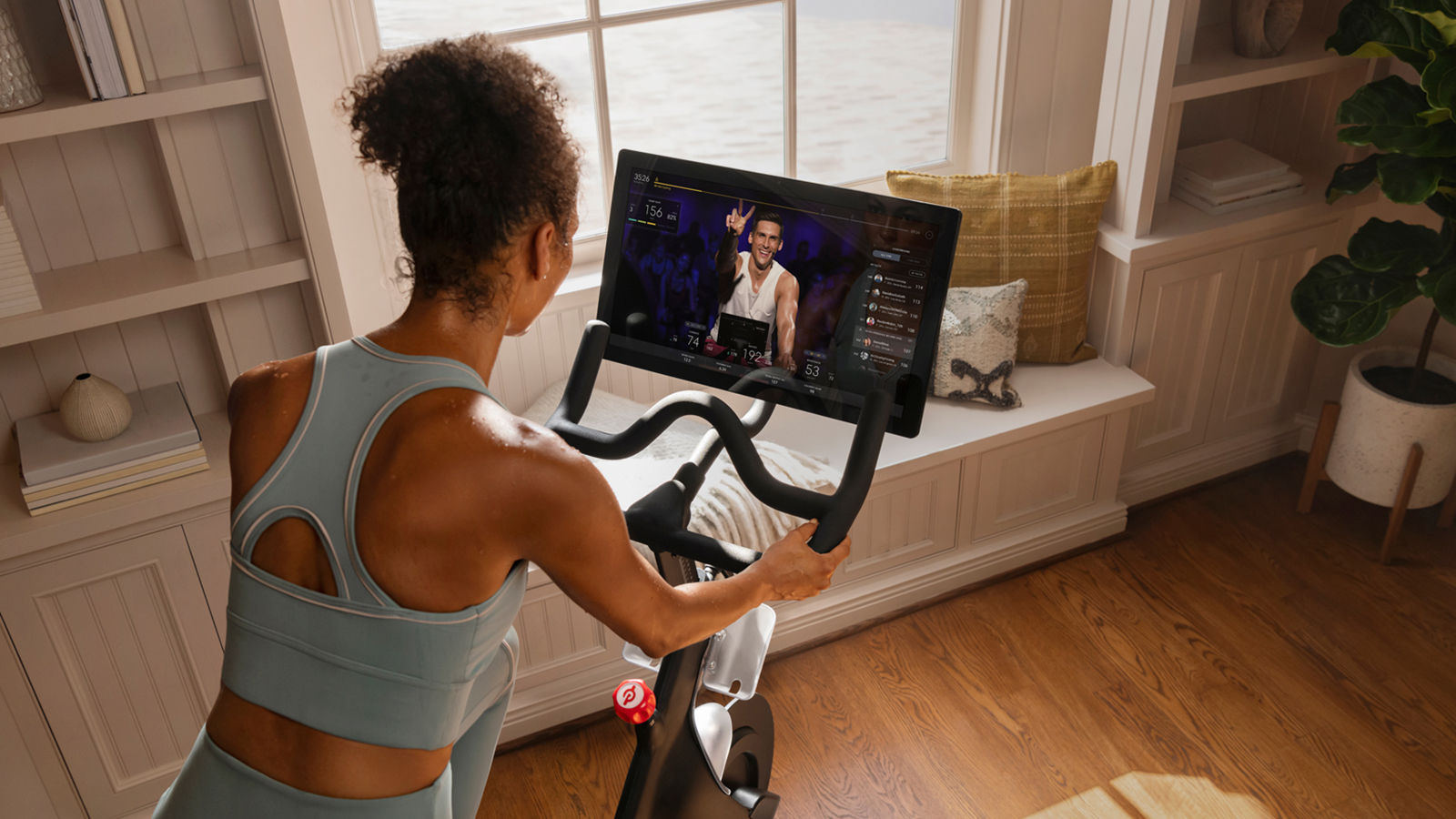
The display runs on Android software, but it’s locked into Peloton’s software so you won’t be able to access any other programs from it. There’s no sneakily watching Netflix here rather than tuning into your trainer.
Once connected to the internet and set up with your accounts, you’ll be able to try your first workout.
We’ve yet to try the Peloton Bike Plus so we can’t comment on how it works, but it’s essentially a higher-spec version of the original bike. It features a larger 23.8-inch HD screen with anti-reflective technology. The screen can also rotate more so you can bend it round for other workouts such as yoga.
It features better audio performance (there’s 4-channel audio rather than 2) and there’s auto resistance; it'll follow your instructor’s plans without you having to physically turn the knob. The price is higher than the standard bike at $2,495 / £2,295 / AU$3,695.
The design of the Peloton bike is sleek, and it’s clear the company has tried to keep this as trim as possible so it’s more likely to fit into your home. However, it is still a large piece of equipment that many with smaller floor space won’t be able to fit in.
Peloton’s marketing refers to the size of the bike as “smaller than your average yoga mat”, and that’s believable. The screen at the front of the bike is what takes up the most space, and then the bike becomes slimmer as you look back from there.
When you find a dedicated space it’s a good idea to keep it there, we wouldn’t recommend moving the bike on a regular basis. It’s a particularly heavy piece of equipment at 61kg (135lb). There are wheels at the front to move it, but it’s clear those are designed for rare occasions rather than shifting it around a living room a couple of times a week.
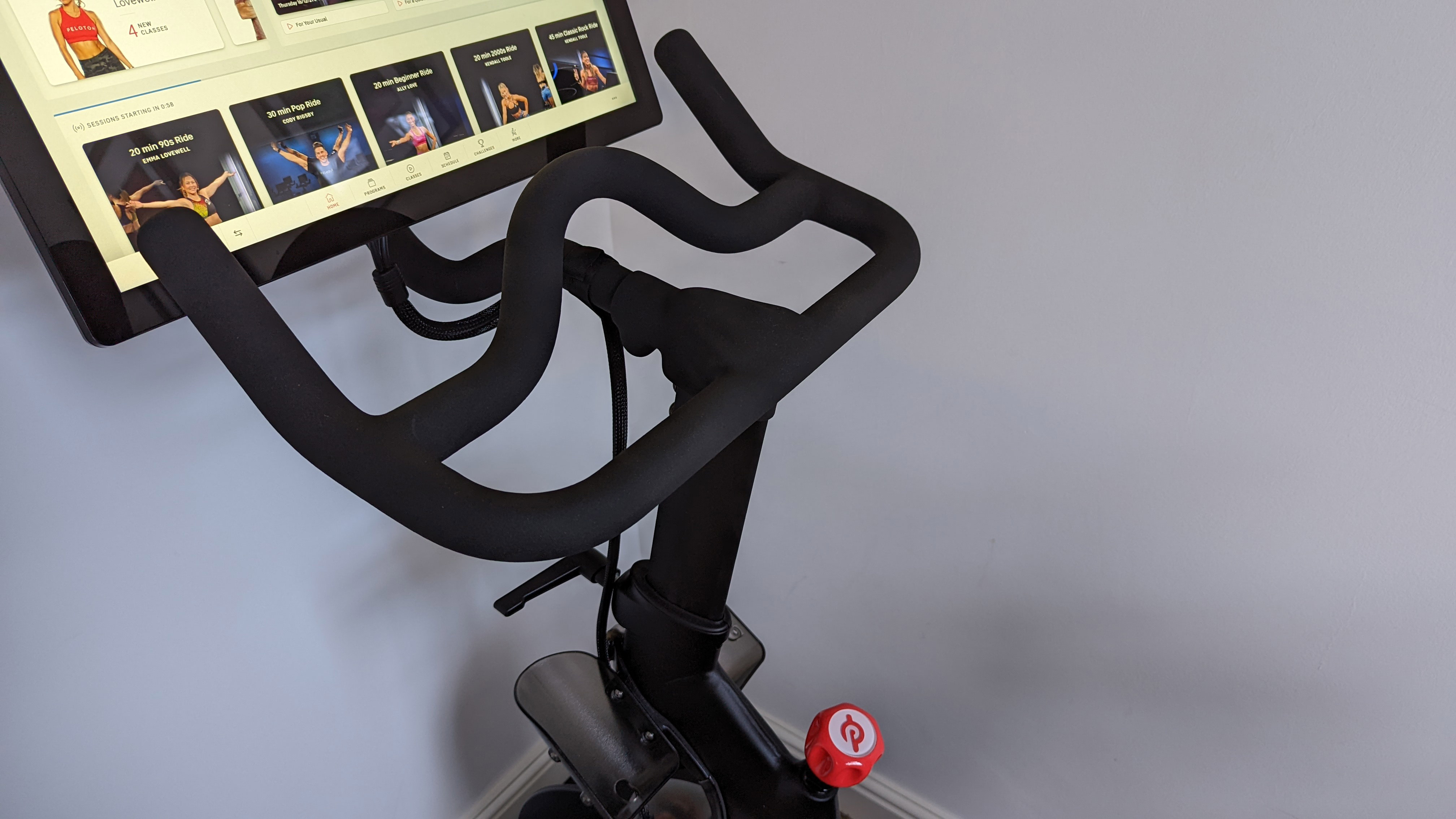
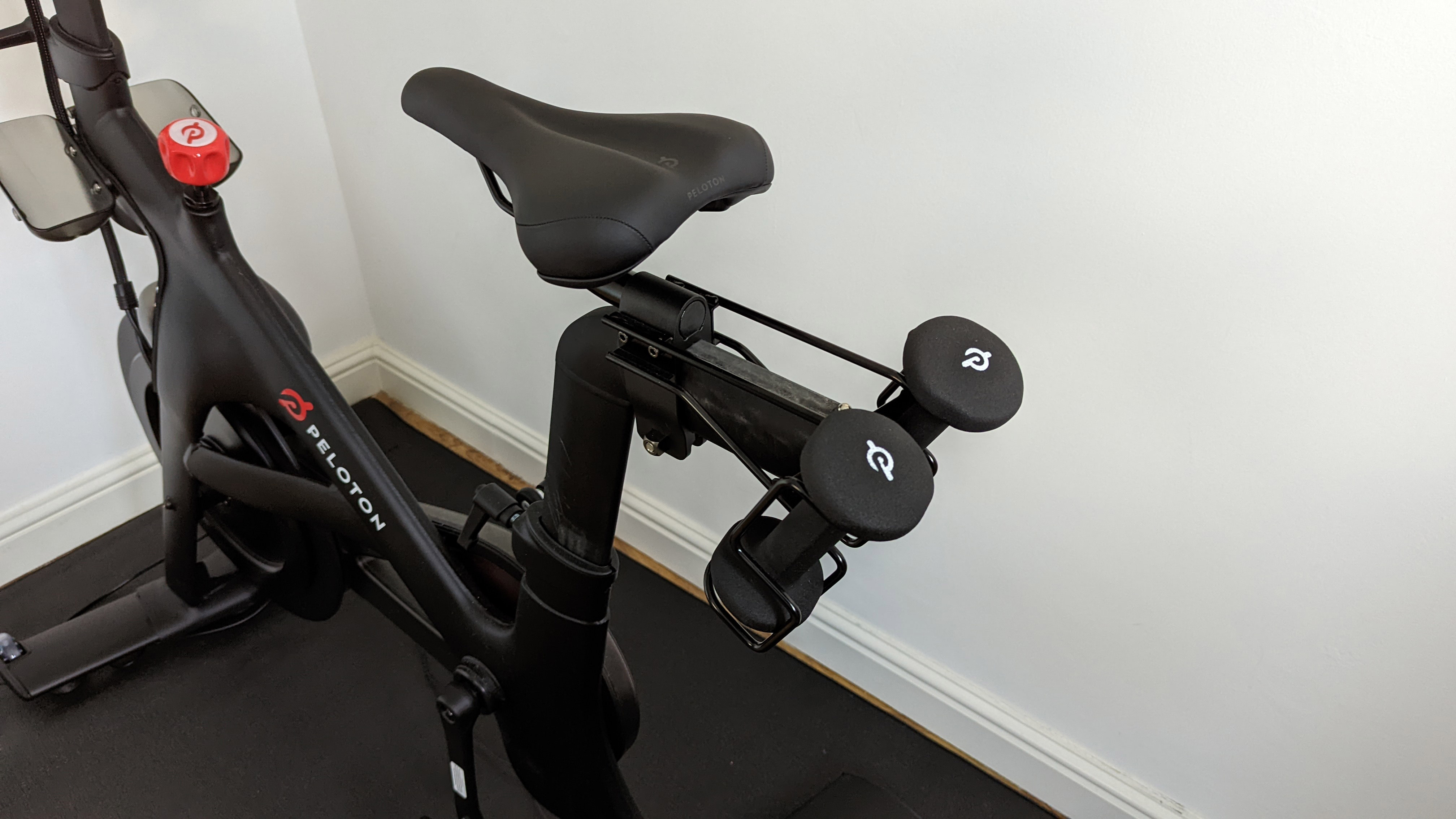
The dimensions are 149 cm length x 135 cm height x 58 cm width (at its widest part). Peloton recommends an extra 60 cm on all four sides of the bike, and that’s something we’d recommend following as well to ensure you don’t hit things during a workout.
Performance
Throughout our trial period, the Peloton bike has worked flawlessly giving us top-end workouts and pushing our spinning further than we’ve done in the past. It’s designed to push you harder, and we found the whole Peloton experience would do just that.
In our three-month usage of the bike, we’ve found that the design works smoothly with minimal technical issues. It’s easy to clip in and out of the pedals, plus the pedaling action has always felt smooth.
There’s a knob below the handlebars that is used to change the resistance during workouts, and that’s perfectly placed for you to edit it in tougher moments during workouts.
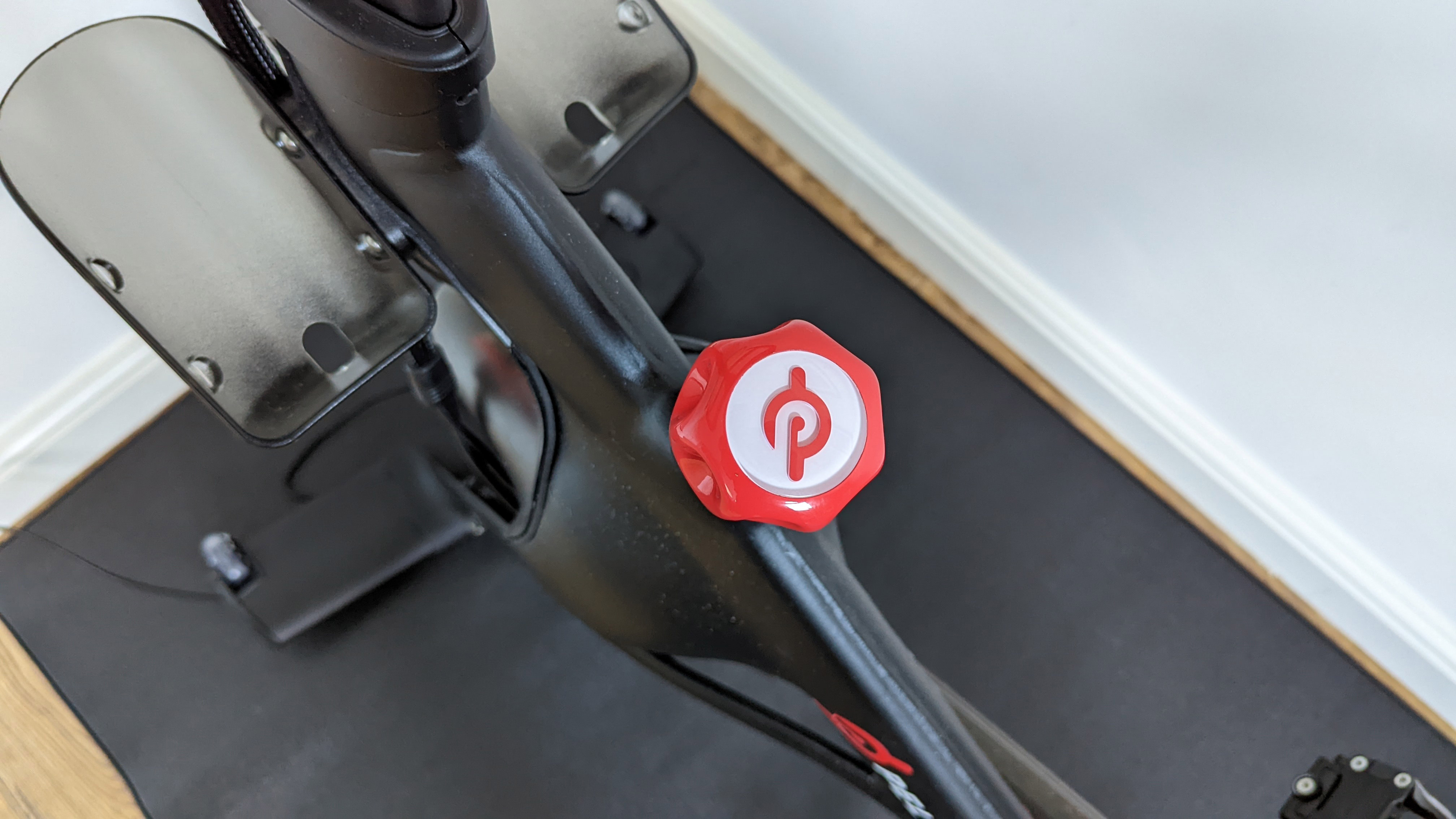
Unlike some rival gym equipment, there’s a clear premium look to this device and it’s likely something you’ll want to show off in your home rather than hide away in a closed room.
The tablet-like screen works well, too. You’re easily able to find your workouts on the big screen, and while the resolution could be a touch crisper (it’s only HD) it’s unlikely you’ll notice when you’re concentrating on the workout.
The included speakers sound good but aren’t going to give you the best sound quality when you’re blasting out some of your favorite tunes in the middle of a ride. If you’re not able to turn up the volume, you can connect Bluetooth headphones to the bike.
We found the connection to work well, and you’d also be able to connect a Bluetooth speaker if you see fit. There are easy-to-reach buttons on the right-hand side of the monitor so you can change the volume at any stage during your ride.
One neat touch is that the software allows you to increase or decrease the instructor’s dialogue. If you like the music you’re listening to, you can decrease the instructor’s volume to get more of the music playing from the speakers.
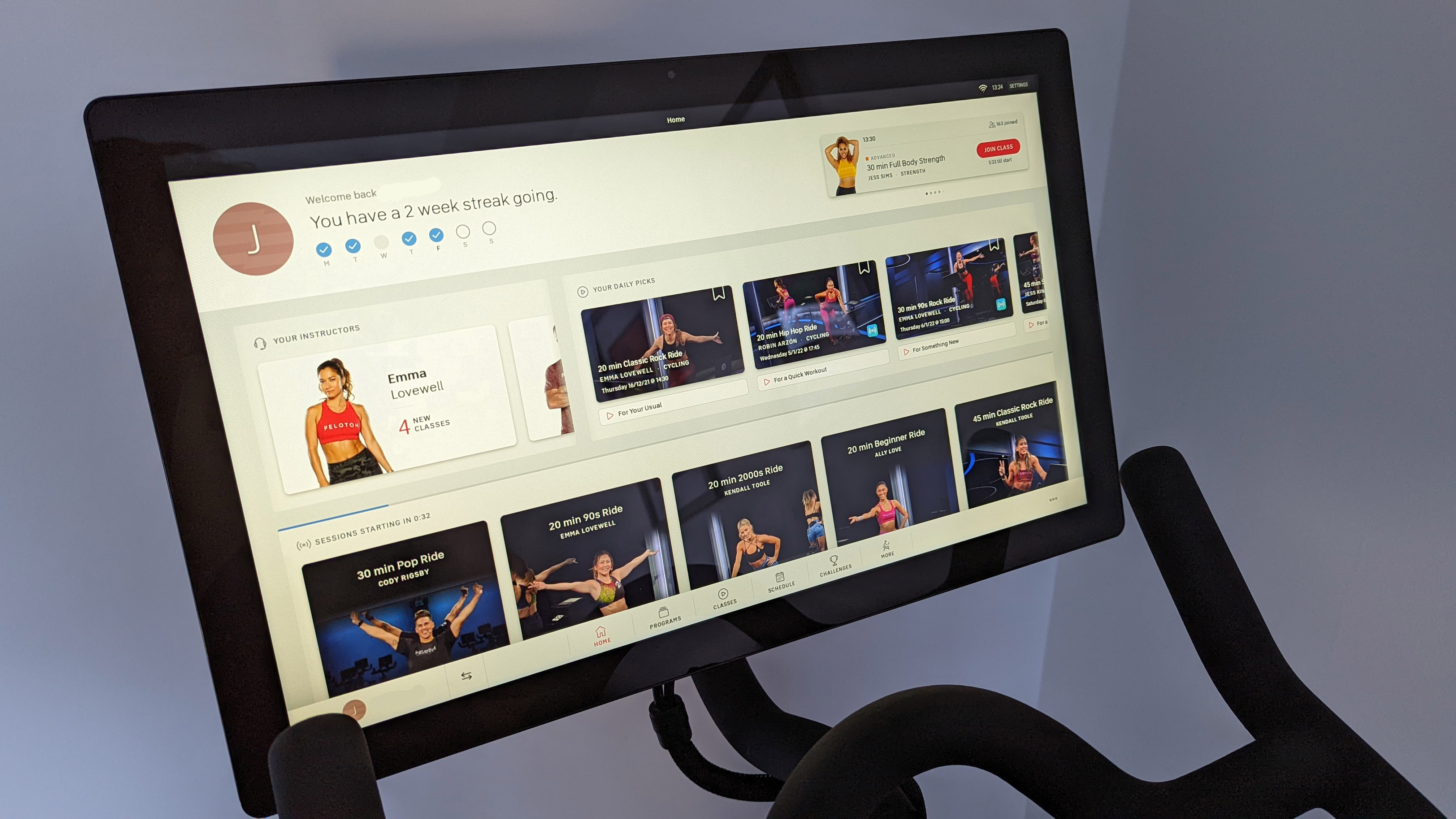
The software is where Peloton’s experience really shines. Peloton All Access is an expensive service, but it offers arguably the best personal trainer-like experience we’ve tested on any piece of gym equipment or apps.
There’s a wide variety of different workouts. At the time of writing, there are 27 workout instructors who provide regular classes for the bike. You’re able to access all of these at any time, plus new workouts are often scheduled live so you can ride alongside hundreds of other people.
Programs give you specific plans to work through over a period of a few days, and we found Mastering the Basics was a great introduction to the bike. There are programs for building strength, improving your riding and even other activities such as core strength or yoga.
There isn’t a huge variety of programs that specifically focus on riding, so you may find you’ll be joining individual classes more regularly than fitting into a specific program. That does help with your variety, though, and means you can experiment with different instructor styles and music.
Should you buy the Peloton Bike?
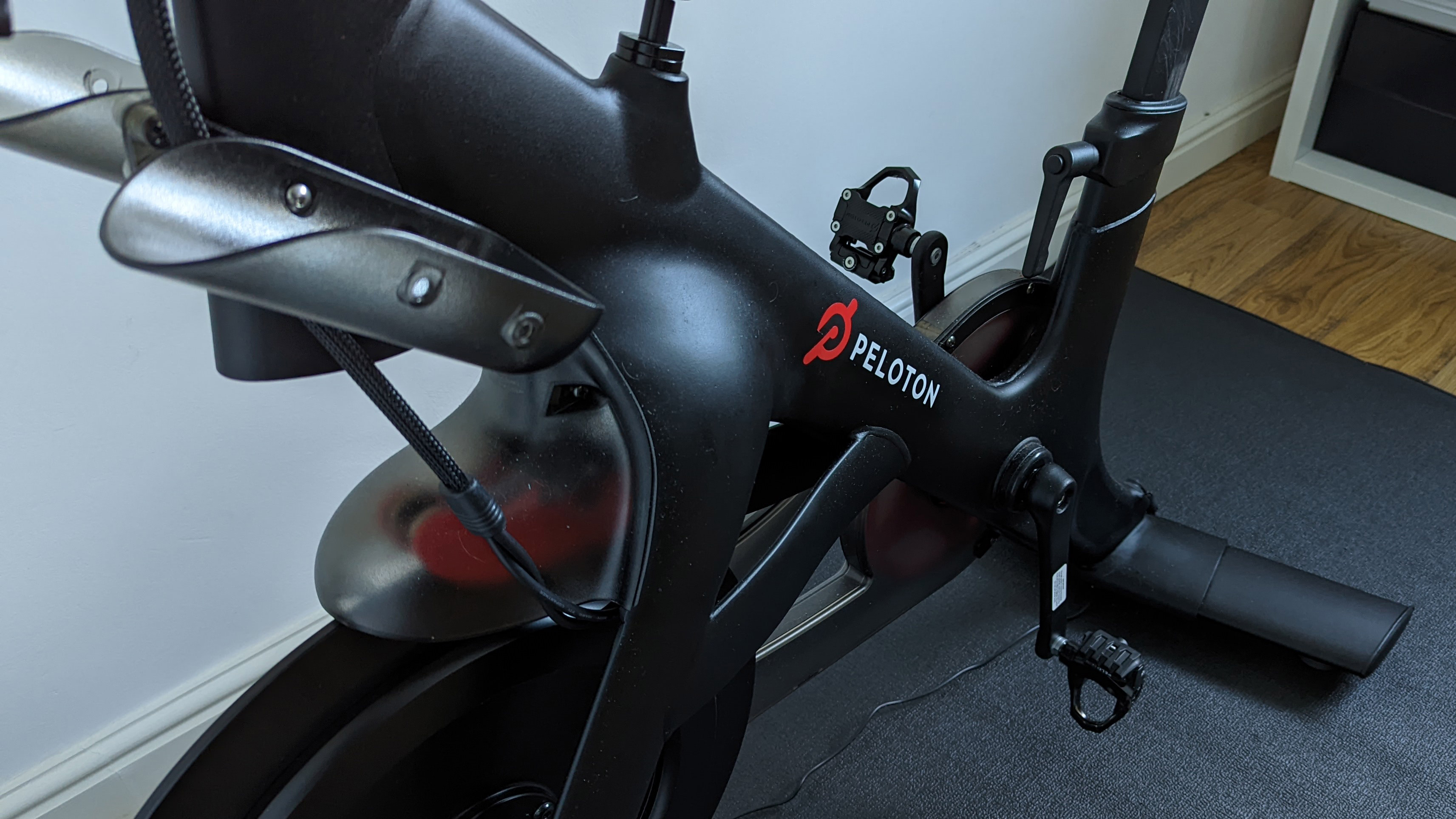
Buy it if…
You want premium exercise equipment
The Peloton Bike is a premium experience that offers everything you need from day one to get into spinning. It is easy to get started and it provides a top-end experience that not all other home gym equipment can offer.
You need equipment that encourages you to work out
The Peloton Bike is designed to be a piece of equipment that you enjoy using and encourages you to get into a regular fitness routine. If you’re looking for something like that, this could be a strong investment that will encourage you to keep working out.
You want a community experience at home
One of the core elements of Peloton is a sense of community with the instructors becoming friendly faces after a significant time using the equipment. Social elements such as high-fiving other riders or following friends are nice touches if you want to feel a little more connected at home.
Don’t buy it if…
You need something cheap
The word Peloton has become synonymous with excess, and it remains remarkably expensive despite changes to the pricing structure. If you’re looking for a way to work out without spending lots of money you should look toward the alternatives.
You want lots of pre-set programs
Programs are an integral part of the Peloton experience, but there isn’t a huge variety of these. At the time of writing, there were 12 programs available and we’d like to see further options for different levels of expertise in the future.
You want a vast array of workouts
The Peloton All Access membership is no longer limited to just bike workouts with access to yoga and boxing classes among the other elements, but you don’t need the equipment to be able to access these. It may seem obvious, but don’t buy this unless you intend to use the spin bike elements a lot.
First reviewed: January 2022
0 comments:
Post a Comment